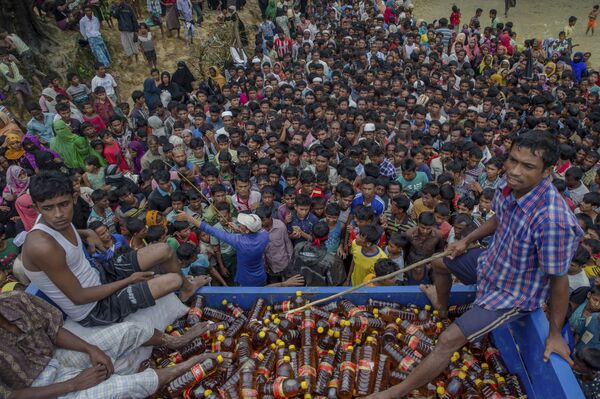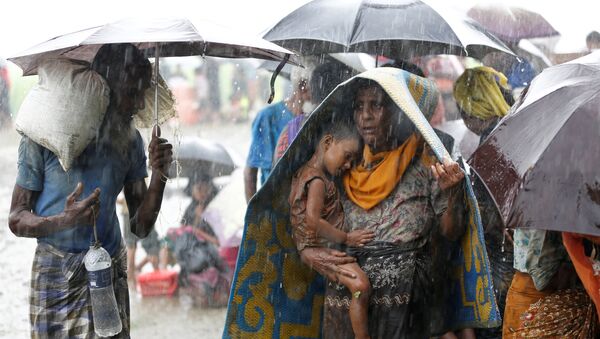The report found that Rohingya refugee children are forced to look for a job outside the camps due to poverty and malnutrition. When hired, they endure long working hours for little pay and some are subject to beatings and sexual assaults.
“We know about numerous cases where children are exploited for labor and also forced into prostitution, beaten and sexually abused by their employers,” Headon said.
When asked how old these children actually are and what kind of jobs they are forced to do, Headon said that these are mostly children aged from 10 to 12, mostly girls, who are forced to work round-the-clock sometimes without any pay and live in horrible conditions.
“We have hundreds of thousands of people arriving within a short space of time at a rate of a couple of thousand each week, and this certainly requires media attention. These people live in congested settlements but, unfortunately, media attention [to their plight] is sort of waning even as humanitarian organizations are trying to provide more support for these people,” Olivia Headon continued.

When asked what the international community should do now to remedy the situation, she said that the crisis is both humanitarian and political and that she expected the participants of international meetings, to bring more pressure [on the Myanmar government] to protect the Rohingya people’s lives.
“The Rohingya crisis needs a political solution and this is something we hope for,” she emphasized.
More than 600,000 Rohingyas have fled Myanmar to neighboring Bangladesh since the start of an army offensive on Rohingya rebels in August.
The Rohingya Muslims are not recognized as citizens by Myanmar and are largely seen as illegal immigrants from across the border.

The conflict between the country’s Buddhists and Muslims, which actually originates in the 19th century, intensified on August 25, 2017, when Muslim insurgents of Rohingya origin attacked security posts in Rakhine.
READ MORE: Rohingya Women Living Without Basic Health Care, Sanitation in Refugee Camps
The attacks prompted a blistering response by Myanmar’s authorities, resulting in clashes and death of hundreds of Rohingya, while hundreds of thousands have fled the conflict zone.



